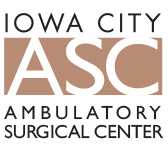Removing a cataract involves separating it from the lens capsule. The affected lens will be replaced with an intraocular lens implant (IOL). Sometimes it’s not possible to replace the lens. When this happens, your eye doctor will prescribe glasses or contact lenses that will compensate for not having a lens in your eye.
Types of Cataract Surgery
There are two general surgical methods that are used to remove cataracts: phacoemulsification and standard extracapsular cataract extraction (ECCE). Both types of surgery are normally done on an outpatient basis in a surgical center instead of at a hospital.
Anesthesia
Most cataract surgeries don’t require general anesthesia unless the patient suffers from anxiety or is unable to comply with instructions during their surgery. In some cases, general anesthesia is used if the patient is allergic to the local anesthetic that is used to numb the eye. The local anesthetic is applied via eyedrops.
During cataract surgery, the cataract and the front section of the lens capsule (anterior capsule) are removed. The back portion of the lens capsule (posterior capsule) is left in place in the eye for a twofold purpose. It prevents complications that would occur if the vitreous gel oozed from the back of the eye through the pupil and it helps support and keep the IOL in place.
Phacoemulsification
The most common type of cataract surgery is phacoemulsification. During this procedure, the eye surgeon will do the following:
- Make two small incisions where the cornea (clear front covering) meets the sclera (white of the eye).
- Create a circular opening on the surface of the lens capsule.
- Insert a phaco probe into the eye.
Ultrasound waves or a laser is then used to break the cataract into pieces that’ll be suctioned from the eye. The IOL will be inserted into the lens capsule. Most of the time stitches are not needed because the incisions will heal on their own.
Extracapsular Cataract Extraction
During ECCC, the eye surgeon will make an 8-10mm incision where the cornea meets the sclera and then an additional small incision in the front part of the lens capsule. He or she will remove the lens. If an IOL will be implanted, it will be inserted in the lens capsule. Stitches are then used to close the incision.
Cataract surgery is commonly performed at the Iowa City Ambulatory Surgical Center. If you have questions about surgery, please call us at (219) 248-1500 or CLICK HERE to learn more.






